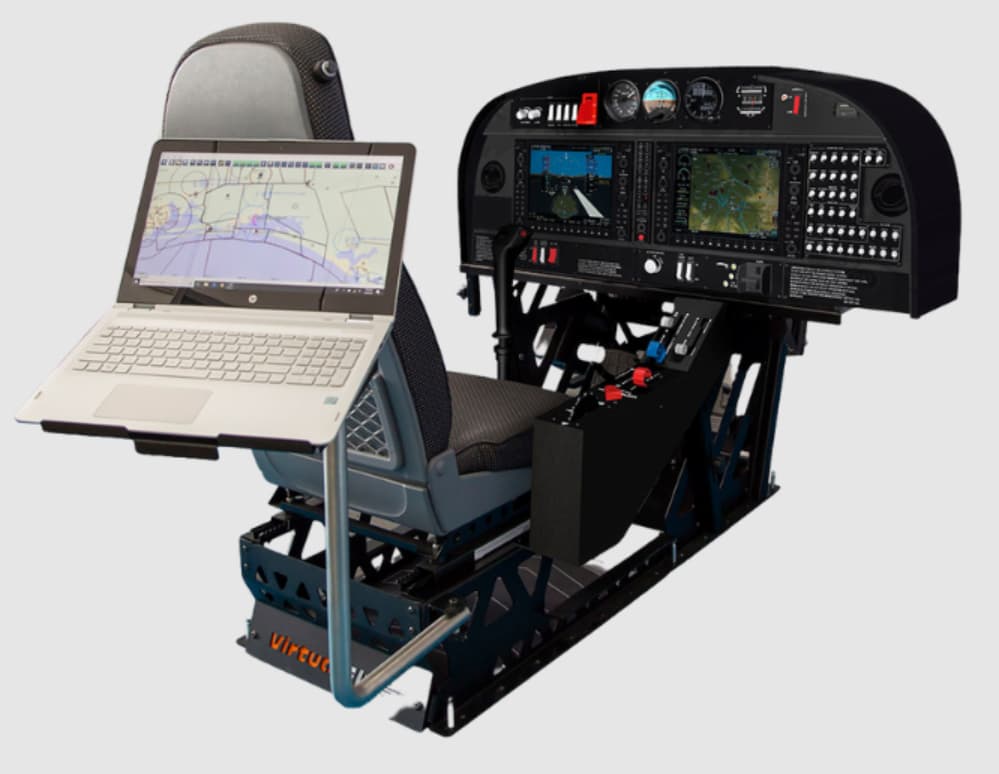There’s something undeniably magical about taking flight. As grounded creatures, being able to soar amidst the clouds like a bird gives us a unique thrill and sense of wonder. While becoming an airline pilot or affording your plane may be out of reach for most, virtual fligt make experiencing aviation incredibly accessible.
Why Every Aviation Enthusiast Should Have Flight Simulators?

The last decade has seen a surge of interest in flight simulation tech amongst aviation aficionados and wannabe pilots thanks to rapidly advancing software and sensor equipment.
In this post, we’ll understand why flight sims are becoming ubiquitous in an aviation geek’s toolkit – covering their burgeoning realism, varied uses as a practical aid, joy, and education provided along with tips to choose your first flight simulator package so you can immediately take off on this immersive new hobby!
Why Flight Simulators Are a Must-Have?
Today’s flight simulator programs integrate physics principles, environmental variables, and aircraft system algorithms to replicate the real sensation uncannily well. With accurate geographic terrain mapping, photorealistic detailing, and variables like wind shear and turbulence built in, home simulation provides an astonishingly close-to-life flying experience.
|
|
And it goes beyond just realism and entertainment.
Flight simulators offer immense practical utility making them a strategically prudent investment for an airplane nut:
- A viable substitute for real-world flight training hours – instructor pilots use sims to demonstrate concepts more safely and cost-effectively.
- Allows trial runs of risky or extremely taxing flight scenarios in a no-danger buildup of experience – bad weather landings, recovery from stalls or flat spins, etc.
- Get familiar with flying specific charter or military planes you may eventually pilot without having to log air miles.
Additionally, flight simming provides other benefits like:
- Understand aviation better as you self-educate on navigating flight plans and aircraft systems.
- Visually explore the world through an aerial lens making travel so much more exciting.
- Pit your skills by trying out combat fighter jet missions or daring stunt sequences.
Flight simulators offer the ideal avenue into aviation as an immersive long-term hobby or professional development tool.
Tips for Choosing Your Ideal Flight Simulator
If you’re sold on flight simming, it’s key you invest in the right simulator package upfront aligned with interests, space, budget, and level of realism desired. Let’s survey what’s available in the consumer space currently:
- Personal Computer Software – Comprehensive packages that transform your home desktop or laptop into a virtual aircraft. Entry options start around $50 while professional-grade editions like Prepar3D are priced upwards of $200. Ideal for solo pilots on a budget.
- Cockpit Simulator Rigs – Fully-modelled aircraft cockpits with hundreds of operational switches/knobs for an intensely realistic experience. Can run from $1500 onwards for GA plane structures while elaborate commercial jet replicas cost ~$75,000 and more! Built mainly for commercial pilot training facilities and ultra-serious hobbyists.
On the hardware side, prioritize components like:
- A graphics card like Nvidia’s GeForce RTX 3080 can smoothly render complex physics and 4K terrain visuals during flight.
- VR headsets or triple Full HD monitor rigs greatly enhance immersion within your virtual cockpit.
- Force feedback joysticks, pedals, and throttle systems for the most realistic response when guiding aircraft movements.
On the software side, check for:
- Range of accurately modeled aircraft like Cessnas, Boeings, and Airbus families matching interests – military jets? GA singles?
- World navigation via actual geophysical features, airports, and ground structures.
- Realistic flight physics pulling in aerodynamics factors, weather variability, and aircraft operating states.
- Multiplayer hosting abilities to fly in busy virtual skies alongside fellow pilots.
Research well, read user reviews, and make cost-aligned compromises where necessary to procure your optimal flight simulator system.
Great Starter Flight Simulator Options:
For recreational hobbyists looking to dip their toes into flight simulation, excellent mid-range software exists offering copious aircraft and scenery without costing a bomb:
1. Microsoft Flight Simulator 2020
- Vastly detailed terrain mapping – uses Bing satellite data to render all planet regions.
- Dynamic real-world weather mirrored into the simulation.
- 20 highly realistic aircraft with authentic cockpit setups.
- Priced affordably at $60.
- Ideal for aviation geeks focused on VFR exploration.
Club this with Logitech’s G PRO Flight Yoke at $170 for added realism.
2. X-Plane 11 Flight Simulator
- Accurate flight modeling tested by real FAA pilots.
- 161 aircraft available spanning commercial airliners to GA craft.
- Vibrant user community with shared mods
- Customizable avionics for professional-grade procedures.
- Great foundation for complex flight training lessons.
Pair with Thrustmaster’s wide range of flight sticks and pedals as budget permits.
Mac users fret not. Aerofly FS2 Flight Simulator offers a nifty closed-environment experience sporting the entire gamut of general aviation aircraft tailored just for you.
Also Check:
Conclusion
Flight simulation software has truly bridged the gap between desktop screens and real blue skies today.
Mimicking the exhilaration and complexity of true flight incredibly closely while packed with tremendous playability and educational value at affordable rates, flight simulators are the ideal starting block for all budding aviation geeks.
Providing a safe, practical, and incredibly enjoyable avenue into the world of flying machines, flight simulators must feature on every aviation enthusiast’s wishlist!



